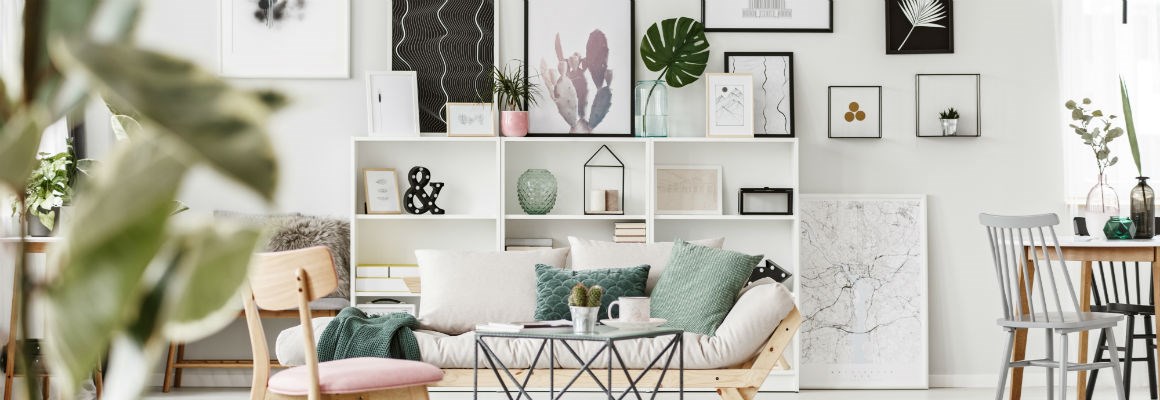Home décor over the decades
We’ve travelled through time and rounded up the best interior design trends from the 1960s to today. We also give tips on how you could incorporate them to your home today.
1960s
Home décor in the Sixties was all about bold colours and psychedelic patterns. From Pop Art to lava lamps, Sixties’ décor was the epitome of creativity and imagination.
When it came to furniture, plastic was all the rage and with seating, the lower the better with bean bags, scatter cushions and blow up chairs becoming the norm. Wood was disregarded for furniture, but you found pine panelling adorned to all walls and ceilings.
Of course, we couldn’t talk about 1960s interiors without mentioning one of the most notable inventions of the time – flat pack furniture. Rather than buying bulky furniture and attempting to squeeze it through a narrow door frame, people could choose what they wanted, take the parts home and assemble it themselves.
How to bring the 60s trends into your home
If you want to bring this experimental era into your home, a simple way to do this is by adding pops of colour and patterns. This can easily be done through bold soft furnishings. You can also liven up the space by adding some colourful prints to your frames.
Accent walls with classic 60s patterns are a great way of injecting some fun into your home. Unique accent chairs can also be a focal point of the room. And if you're feeling brave, you can pay homage to this era by mismatching patterns and colours.
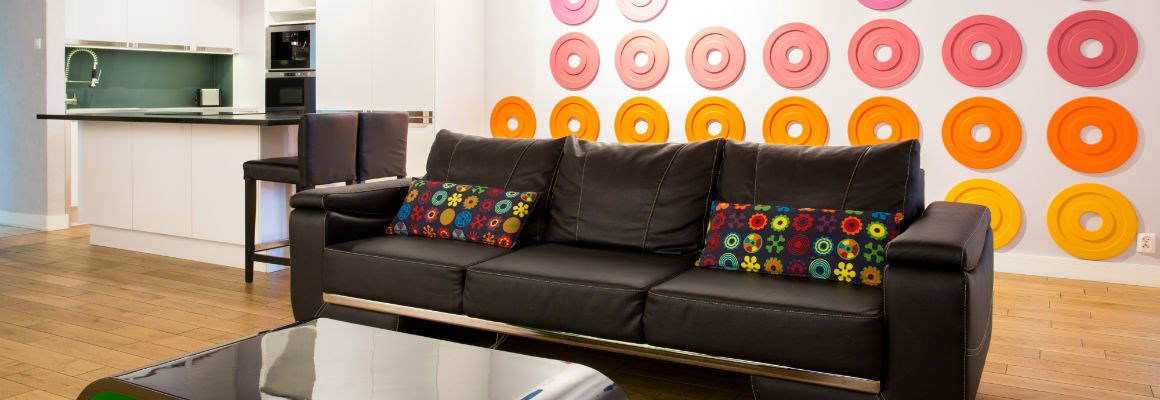
1970s
Transitioning from the vibrant colours of the 60s, the 70s were all about rich, earthy tones. Think mustard yellow, olive green, chocolate, caramel, and camel. Floors were covered with thick shag pile carpets and ceilings were decorated with textured Artex patterns – swirls, spikes and even the classic ‘popcorn ceiling’.
The Seventies also brought a rise in open plan living - think spacious kitchen-diners, perfect for accommodating large families and entertaining guests. Another popular interior décor inspiration was nature, with plenty of stone, indoor plants and wicker furniture making an appearance in 70s homes.
How to bring the 70s trends into your home
Whilst many consider the 1970s a controversial design decade with words like ‘kitsch’ ad ‘garish’ being used to describe the out-there look, there are several elements that remain to this day.
The shag rug still features in many homes, not only do they look nice, the long pile means they are super soft and luxurious underfoot. The arc-style floor lamp is another piece which echoes the period theme.
Indoor plants are a nice feature to help breathe new life into a room and popular 70s earthy tones are rich and warm colours that are comfortable to be around. Suitable for all rooms, earth tones have the potential to be just as lively and interesting as other colours.
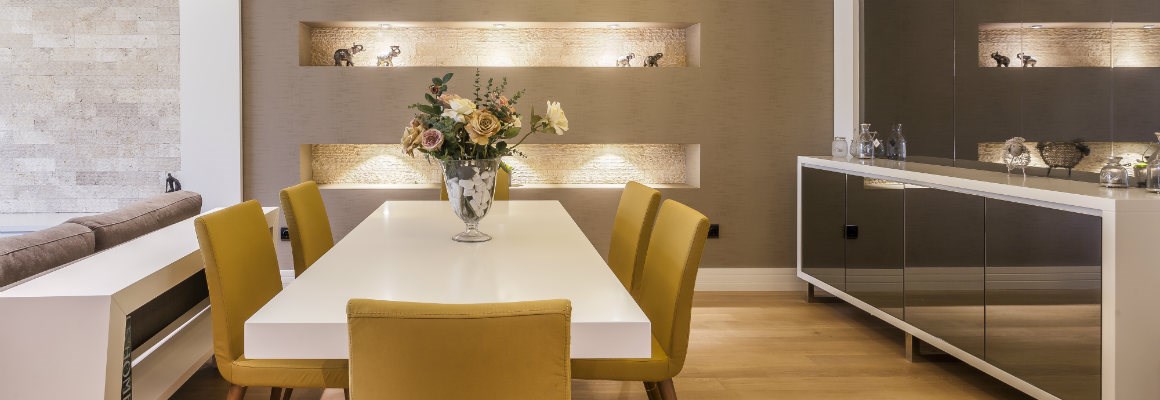
1980s
Interior design had a slight change of direction in the Eighties. Compared to relatively modern, progressive décor in the 60s and 70s, homes in the 80s were much more traditional. Think chintz, ruffles and delicate floral patterns. And for the colour scheme? Pastels, pastels and more pastels.
Rooms were decorated with layers of wallpaper (never paint!) and you could guarantee there would be at least one wallpaper border somewhere in the house. The more intricate the better, with delicate, porcelain shades and dangling jewels.
How to bring the 80s trends into your home
If you're a fan of this decade, it's easy to bring it into your homes today. Florals are timeless, and they are everywhere, whether it's bedding, cushions or prints for walls, they are still loved by many.
Incorporating pastels into your home is a great way to bring in some colour without having it overpower everything else. Pastels are great to add a touch of colour to a neutral room, simply add some pillows, throws, curtains, or if you’re really into your pastels, opt for a pastel coloured sofa.
Pastel colours are also the perfect choice for the bedroom, especially if you are looking to decorate a child's room. The less stimulating shades can become your ally, helping them relax when it's bedtime, whilst adding that delicate touch to the room.
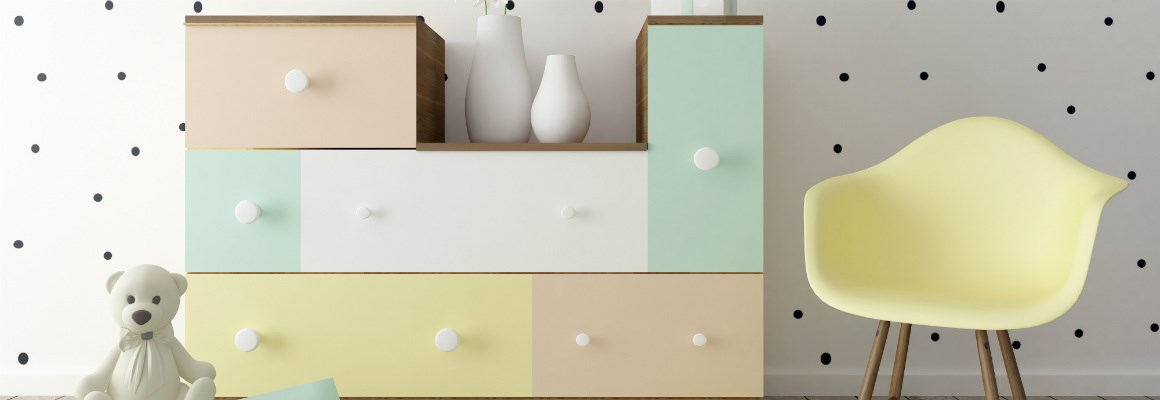
1990s
The 90s began as an era of minimalism, where whites and neutral tones were considered contemporary. However, this drastically changed with the latter part of the decade focusing on florals and damask patterns. If paint was chosen over wallpaper, this was applied using sponges and rag-rolls for a decorative finish.
And we can't talk about the 90s with a mention of pine. People had chairs, tables, dressers, cupboards, and well just about anything made from the sturdy pine wood.
Plus, as we were becoming a lot more hi-tech, homes were being taken over by huge TV entertainment centres, CD cupboards and computer desks to accommodate for large, bulky technology.
How to bring the 90s trends into your home
You can still see the 90s era influencing interior trends today. A major 90s trend that is still around is the white kitchen. This timeless choice that gives a clean, airy feel to a room. It's an ideal colour if your kitchen is not overly generously sized or lacking light as the white will reflect light.
The art of artificial flowers began in the 90s. And great news for us who aren't great at taking care of the real thing, there are now some great, realistic looking artificial flowers to brighten our homes.
The 90s also saw a transition to lighter wood. Blonde wood flooring can make your home a stylish, peaceful haven. Whilst the 90s loved shiny, lacquered wood, it's now all about keeping it as raw and natural as possible
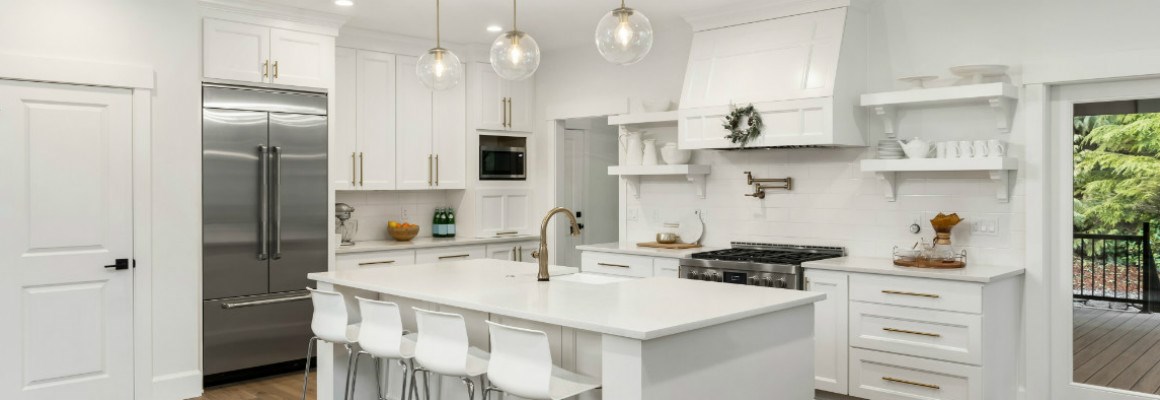
2000s
With the arrival of the millennium, people embraced colour into their homes again. There was less importance on matching items with homeowners now mixing colours and patterns up. People wanted their homes to be unique to them with photography and feature walls adorning many people's homes.
The progression of technology became an influence of how interior was set. Devices got smaller, but they were taking a higher priority in the room arrangement. There was now a focus on staying in as flat screens recreated a home cinema.
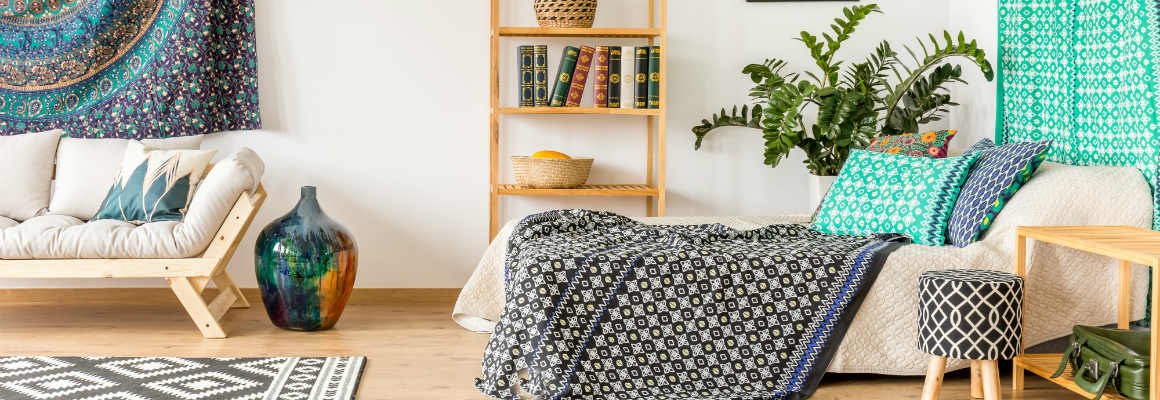
Interior design re-embraced the theme of colour into the home, with spaces becoming more personalised. The popularity of flat pack Ikea furniture reached dizzying new heights, whilst the technological revolution saw devices getting smaller and taking a higher priority in room arrangement.
How to bring the 00s trends into your home
The 00s décor was all about showing your personality, something we should all be looking to do in our homes. Your place of home should lift your spirits and make you happy, which is easily done by making your home unique to you.
If your hobby is travelling the world, add bits you've gathered over time into your décor, if your hobby is playing music, make a feature of your instrument by mounting on the wall when it's not being used. Another great way of incorporating your life into your home is to create a photo wall using prints of good times with your family and friends.
Now
Fast forward to today and there are a wealth of trends and styles to choose from. We've well and truly stripped back our interior design style. From Scandi minimalism to the monochrome trend, homes are much less 'kitsch' and much more clutter free. Whether you're a fan of the 'industrial' look with exposed brick and metals, or you prefer charming, country cottage décor, we're now spoiled for choice when it comes to home decorating and furnishing.
